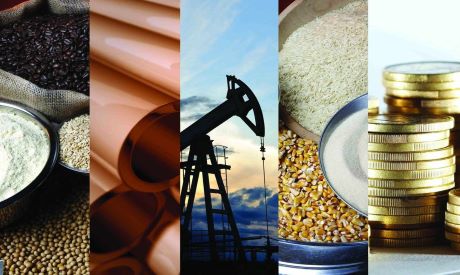China’s economic malaise is carving a ceiling on commodity prices
Global commodities
Global markets continue to contend with a flagging Chinese economic recovery. A protracted crisis in the property market, deflation, weak exports and a falling yuan reinforce fissures in the world’s largest commodity consumer. Yet the devil is in the details as its not been a homogeneous story on Chinese commodities demand thus far this year. On the one hand, freed from the constraints of the pandemic, Chinese oil demand has been solid year-to-date approaching an all-time high of 16m b/d. On the other hand, metals demand is highly correlated to the infrastructure complex and fresh credit concerns around Chinese property developers are clear headwinds. This disconnect matters for commodity returns. As we recently catalogued, what is becoming increasingly apparent is that Chinese stimulus measures remain smaller than in previous cycles (see here). Structural challenges surrounding the government’s desire to pivot to an economy led by consumption instead of investment – are helpful for energy and agricultural demand but not for old economy base metals driven by construction. With ~55% of global metals demand and ~14% of global energy demand derived from China, what happens in China matters for a cyclical asset class like commodities. Taken together, the macro backdrop is what is driving investor angst which risks sentencing upside for the broad Bloomberg commodities (BCOM) index over the remainder of 2023.
Energy
After surging to a six month high close to USD90/b two weeks ago, Brent crude’s quiet rally is ebbing. The downturn has been exacerbated by three key factors – (i) a pessimistic economic outlook in China; (ii) indications that the Fed is not yet finished tightening; and (iii) a further revival in both Iranian and Venezuelan supply. Meanwhile, deliberations to avoid strikes at Australian LNG terminals have begun this week with early indications that workers will consider a “strong offer” from Woodside Energy Group on pay and work conditions – EU natural gas (TTF) prices have plunged ~15% on the development (see here).
Base metals
After a firm start to Q3 2023 with the Bloomberg base metals complex (BCOMIN) rallying 6% in July, it has nearly erased all those gains thus far in August. A combination of broadly weaker-than-expected July China macro data, apprehensions over liquidity risks in China’s USD2.9trn trust industry, alongside disappointment over piecemeal stimulus measures following the dovish July Politburo meeting is weighing on the base metals complex.
Precious metals
Gold has fallen below USD1,900/oz for the first time since March, as July Fed minute showed participants’ focus on “unacceptably high” inflation, which is driving US 10 year real yields to the highest since 2009. As a non-yielding asset, gold is having to compete for a place in portfolios (less of an issue when bond yields are low, but more challenging as yields rise). With central banks raising interest rates (with the exception of China), its intuitive that gold ETF holdings are now the lowest since early 2020 and net long positioning is the lowest since March, with significant new shorts added.
Bulk commodities
Iron ore is approaching one month highs amid increasing speculation Chinese steel mills will ramp up output ahead of the country’s seasonal pick-up in construction activity during September and October. Despite this expectation of a revival in demand, this stands counter to our expectation for a surplus inflection in the iron ore markets over H2 2023 towards a muted price environment.
Agriculture
Prospects for tighter curbs on Indian rice exports (comprising ~40% of global supplies) pose a fresh threat for global food inflation. The government is considering further curbs, which if implemented, will mean 80% of its cargoes will be either banned or subject to some form of restrictions. This bodes ill for Asian rice prices, which are already at 15 year highs, to climb even further.
Core indicators
Price performance and forecasts, flows, market positioning, timespreads, futures, inventories, storage and products performance are covered in the report.



